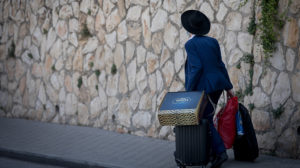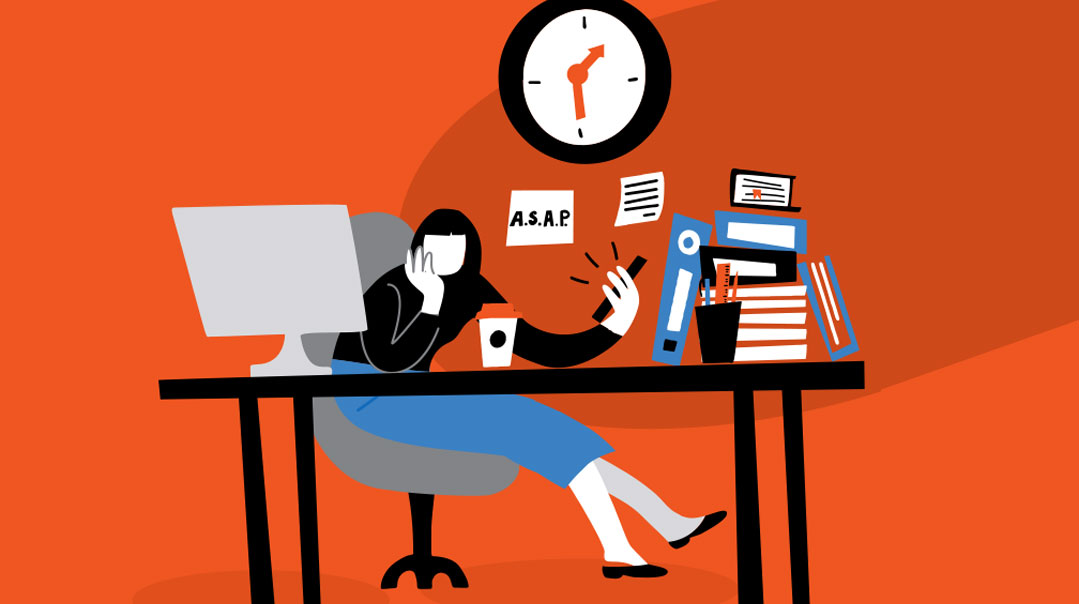Fighting Fear
| March 20, 2019
Which parent hasn’t comforted a child through an avalanche of fearful thoughts, held a trembling, sweaty little one as he imagined horrific car crashes, listened to a teen agonize about her panic of being laughed at by her peers? But how do you know when a normal fear has become a phobia?
According to psychologists, when fears become persistent, inappropriately intense, and lead to avoidance tactics, this should ring alarm bells. For example, if your child consistently perspires, breathes heavily, trembles, feels as if she’s choking, or suffers nausea and dizziness when you pass by a dog or travel in an elevator, chances are she’s suffering from a phobia.
A very young child might become excessively clingy, vomit, or tantrum to show his distress. In general, a fear that causes intense suffering and negatively impacts a child’s quality of life is probably a phobia.
Thankfully, phobias are highly treatable. Mrs. Nicole Sher, a Manchester-based Chartered Educational Psychologist and former principal with 20 years of experience working in schools as well as in private practice, says that the fact that sufferers are usually aware of their difficulty makes diagnosis far easier. However, because avoiding the source of their fear is the most common knee-jerk reaction for a phobic child — a child who is terrified that the rebbi will call on him to read may take strategic bathroom breaks, a child with a fear of carnivals may develop a stomachache on carnival day — this can sometimes prevent parents from noticing a problem in the first place. Additionally, a child may be reluctant to get treatment, because he doesn’t want to face his fears.
“What can be challenging for parents is that some children develop phobias of exactly those things that others find fun. Carnivals, Chol Hamoed events, Purim, and plane travel are things that many people think are wonderful, but one child in the family may be absolutely terrified by the same event,” explains Mr. Dovid Gertz, LPC, a Denver-based therapist who specializes in working with children and adolescents with ADHD, depression, anxiety, and phobias.
Step one is to acknowledge the phobia, because, as Mr. Gertz says, if a child feels something is scary, and everyone around her is gung ho or dismissive about it, the contradiction between what her instincts are telling him and her family’s reaction can jar her and make the stress worse.
Ruchama, mother of nine-year-old Moishy, remembers when she realized that Moishy’s fears were a genuine phobia. “Suddenly Moishy was terrified to go to sleep. He was shaking in fear, talking about robbers, suffering nightmares of intruders chasing him. I thought it was a phase, so I offered him comfort and spoke to him about the mezuzah protecting us. I gave him logical evidence that robberies were uncommon. I explained firmly that he needed to get to sleep so he wouldn’t be tired the next day. But the fear was unrelenting.
“Late one night, when I said in exasperation, ‘Moishy, you need to go to sleep,’ and he whimpered, ‘I wish I could, but I’m just much too scared,’ it hit me that he was being haunted by something much bigger than him.”
Treatment Tactics
Phobias usually don’t make sense to parents, but pointing out their nonsensical nature will not dispel them — and neither will panaceas, or attempts to exert parental authority and compel the child to face his fears. Ruchama says that beginning to see Moishy’s phobia as a problem that they needed to tackle together with him released some of the tension surrounding bedtime.
Mr. Gertz explains that psychology views phobias as a response of the lower brain. Addressing the upper brain with logic to challenge the irrational thoughts will not turn off the phobia’s trigger. Rather, successful treatment first addresses the lower brain with breathing or sensory calming techniques.
It’s far better to deal with a phobia in its early stages. “Don’t wait for the reactions to reach 80 or 90 out of 100 in intensity, but address them at 20,” advises Mr. Gertz. Allowing fear to fester will only strengthen it. If parents cannot help their child break free on his own, and the phobia is impacting the child’s quality of life, they should seek professional help. Treatment for phobias has to be individually tailored to the child and the nature and intensity of his fears.
Some parents report success in overcoming mild phobias by creating a “worry box” together, which their children then fill with details of their fears. “For a younger child,” says Mr. Gertz, “Parents can reenact whatever has triggered the phobia and role play with the child. They can video the trigger and watch it together with the child, discussing and modeling responses.”
Modalities such as play, sand, or drawing therapies can help to externalize a child’s fear. Mr. Gertz treated 11-year old Dina who was struggling with the fear of darkness and being alone at night. Mr. Gertz showed her parents how to calm Dina down. He also used drawing and writing therapies to help her externalize and then challenge the fears.
Soon, she reached a stage where she could really challenge her fearful thoughts. “It was like she could say to herself after expressing the fear, ‘I know this is not really true,’ ” says Mr. Gertz. “She became much more comfortable and functional.”
Mrs. Sher explain that professionals may use behavioral therapy, medication, or a combination of both to treat phobias. There are a number of therapeutic approaches. Some therapists use desensitization or exposure therapy; others use CBT (cognitive behavioral therapy), which helps the child cope by learning different ways of understanding and reacting to triggers.
With skilled therapy and commitment to practice skills over time, children can gain control of their own feelings and thoughts and make a complete recovery from a phobia. Mrs. Sher shares the case of Shira, a teen suffering from agoraphobia, the fear of being in public or enclosed spaces. “It started with panic attacks, so Shira avoided situations such as going to the stores in case she had a panic attack there. I taught Shira breathing techniques and progressive muscle relaxation exercises. She began to swim and go to dance classes four times a week. This helped reduce the physiological component of her panic.”
At the same time, Mrs. Sher also worked on changing counterproductive self-talk and challenging Shira’s mistaken beliefs that she couldn’t do certain things, or that she would definitely make mistakes. They worked on her panicked reactions as well as on her avoidance behaviour.
At the outset, Shira had severely limited the places she’d agree to go. Through imagery and real-life exposure, she learned to be comfortable within these situations. Mrs. Sher began with imagery exposure, going through each of the steps involved in going to the store until Shira could visualize the final step in detail without feeling any anxiety.
Next, they practiced real-life exposure, going through each step with the help of a support person. Eventually Shira was able to do this alone.
Shira took gradual steps, which progressed as follows. First, she stood near the entrance of the store; she then stood there for one minute; she then went to the back of the store for a minute and then promptly left; she then spent three minutes in the store without buying anything; she then bought one item and went to the express checkout line at a very quiet hour; she then bought three items and went to the express checkout line; finally, she bought three items and went to the regular checkout line.
Shira found the process worked best for her if she would temporarily stop or retreat at any time she felt anxiety coming on too strongly. By practicing exposure on a regular basis, she was able to enter all the situations she’d avoided.
Fortunately, Shira also had a very high level of self-motivation, and her parents were encouraging and reinforced her. Shira learned that the most efficient way to overcome her phobia was to face it rather than avoid it. Along the way, she learned to be assertive and developed a stronger sense of self.
An Ounce of Prevention?
Sometimes, there’s a clear pattern showing the development of a phobia: A child who is bitten by a dog may develop a phobia of dogs. The child whose friend lost a parent can become fearful for his own parents’ safety.
But often parents are left scratching their heads. What happened to cause my child’s phobia? And why was only this child affected and not the rest of the family?
“Moishy says that his fear of robbers comes from his third grade teacher telling the class a story about robbers,” Ruchama says. “My husband and I are skeptical about that. We think that the phobia could be a reaction to moving to another country when he was seven, and then moving from a rental to our own home a year later. It must have been unsettling for him, though none of my other children reacted in that way.”
Mrs. Sher explains that the risk factors for developing phobias fall into three broad categories: personality type, genetics and family; environment, social support, and life stresses; and psychological and coping style.
While the significance of personality type is controversial, many psychologists would agree that some children have characters that are more prone to anxiety. Research has shown that anxiety, like depression, can run in families.
But it’s not only genetics at play. There’s also conditioning, where family members observe and learn from each other’s fearful behaviour and avoidance strategies. Some children will be conditioned to emulate these responses and the phobia will be instilled, while other children will be conditioned to do the exact opposite.
Mrs. Sher posits that children are never immune to the stresses of their environment. Trauma, stress, threatening events (like diagnosis of an illness), and relationship difficulties can all trigger anxiety. These can apply whether the stress is continuous or a one-off occurrence, but emotional stress is cumulative: The more a child has to deal with, the more likely she is to feel anxious. Paradoxically, celebrating the birth of a new sibling, moving to a new house, or even a sibling’s marriage can be just as stressful as unhappy occasions.
Is there a possible way to prevent phobias from developing? Not really. But Mrs. Sher confirms that the intensity of phobias decreases with increased levels of social support and a confiding relationship — not that those are always within parents’ power to control or remain constant during our children’s growing years. “Different children experience different relationships and forms of attachment as they’re developing,” she points out.
There are children with a tendency to catastrophize (“Ma, what if the rope of this cable car just snaps?”) or jump to conclusions (“Abba’s going to go without us if we don’t meet him at the right time!”), and there are children who focus on the positive. If your child’s imagination easily goes into overdrive — she imagines herself playing the role of any hero she learns or reads about, or fantasy becomes almost real to her — scary events may trigger a phobia. A child’s thoughts affect her mood and color the way she views situations and filters her memories.
More resilient children are less likely to avoid situations or objects, while others will avoid a park where they once encountered a runaway dog. When rewarded by the reduction of anxiety and feelings of relief, their avoidance behavior gets reinforced. And as they mature, avoidance may get more sophisticated, and a teenager may learn to compensate for the activity they avoid. Phobias of situations like flying, which only arise infrequently, can sometimes go unnoticed — and therefore untreated — for years.
As a result of the personality, family, and environmental factors, one phobia can often lead to another, which is why an individual with a fear of heights may develop a fear of lightning, or a child who’s afraid of the dark may become afraid of being in small spaces.
If you suspect that your child has a predisposition to anxiety or may be developing a phobia, Mrs. Sher offers three concrete ways parents can help strengthen their child’s ability to face life. “First, helping children have a strong sense of emunah and role modeling a joyful connection to Hashem grounds them and strengthens their coping ability.
“A second way to build up resilience is to build your child’s self-esteem with positive self-talk, correct mistaken beliefs, and cultivate an open, communicative relationship. If we facilitate emotional expression, regulation, and assertiveness, we substantially lower children’s levels of anxiety, resentment, and sense of confinement, which reduces their tendency to panic. Part of this facilitation is role modeling by parents. What we say and do when delayed by impossibly snarled traffic, snubbed by neighbors, or faced with a daunting marathon of appointments and errands can help our children believe in their own capacity to deal with stress.”
Mrs. Sher’s third recommendation is, “Encourage regular vigorous exercise. Exercise is one of the most powerful methods of reducing stress and anxiety. Parents can run, bicycle, swim, or play sports with their children. Teaching breathing and relaxation skills; incorporating good nutritional habits; and reducing stimulants such as caffeine, sugar, and salt in our children’s daily lives decreases anxiety. These three techniques, in conjunction with the above-named therapies, are strong foundations for overcoming anxiety and phobias.”
Mr. Gertz recalls one young patient who found the yeshivah Purim party that his family attended far too much of a good thing. It was a celebration with loud music, costumes, and the possibility of getting separated from his parents. While the whole family looked forward to the event, one son detested it and tried to get out of attending in any possible way, wreaking havoc on the family plans.
Through sand therapy, the child eventually worked to minimize his fears. And the family? They learned to validate his feelings — and stopped saying “What’s wrong with you? Everyone loves parties!”
Because sometimes, one person’s fun is another person’s phobia.
What’s She Afraid of?
There are numerous phobias common among children. The most common ones can be classified as follows:
Fear of potentially dangerous situations:
Aquaphobia — fear of water
Nyctophobia — fear of the dark
Aerophobia — a fear of aeroplanes
Acrophobia — a fear of heights
Claustrophobia — a fear of being in constricted, confined places
Medical fears:
Emetophobia — fear of vomiting
Dentophobia — fear of dentists
Latrophobia — fear of doctors
Hypochondria — a fear of becoming ill
Performance anxiety:
Atychiphobia — a fear of failure
Erythrophobia — a fear of blushing
Fear of animals:
Zoophobia — a fear of all animals
Cynophobia — fear of dogs
Arachnophobia — a fear of spiders
(Originally featured in Family First, Issue 635)
Oops! We could not locate your form.












